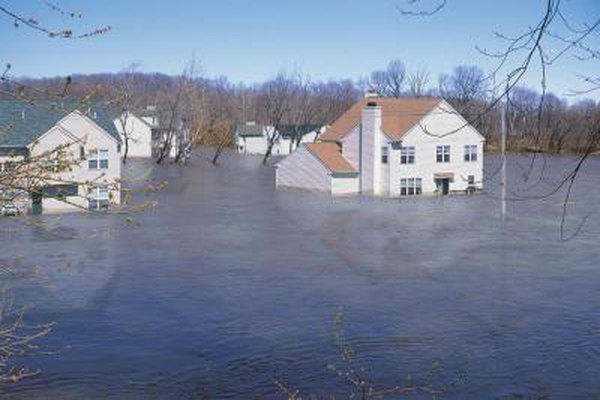Tax Credits for Flood Victims
The IRS often extends filing deadlines for disaster victims.
Comstock/Comstock/Getty Images
According to the National Flood Insurance Program, floods top the list of the most prevalent type of natural disaster. If you've suffered losses as a result of a flood or have experienced difficulty filing your taxes, the IRS can help. Depending on the extent of the flood, you might have the right to a few different types of relief.
Disasters
When the federal government declares a disaster area, the IRS provides special relief to victims of the disaster. Such relief often takes the form of extended deadlines for filing and payment of individual and business taxes. Visit the IRS website to obtain information about relief granted in relation to a specific disaster (see Resources). If you live, or have a business, outside the designated area but have been affected by the disaster, contact the IRS to request information about relief exceptions. The IRS might grant a filing extension if your tax records were stored in the disaster area, for example.
Casualty Losses
You can deduct losses caused by a flood on your tax return. The IRS allows you to deduct for damage or deterioration caused by sudden and unexpected events, and floods fit this description. You can't deduct losses for damages covered by an insurance policy unless you subtract the expected reimbursement amount from your casualty loss deduction. In most cases, you have to deduct any casualty losses in the year in which the flood causes the damage. However, if the flood was part of a federally declared disaster, the IRS will typically allow you to deduct the loss on the previous year's return. If you have already filed this return, you can amend it to take the deduction.
Net Operating Losses
In the event that your flood-related losses exceed your income, you can claim a net operating loss on your tax return. A net operating loss means you have a negative amount of taxable income. You can carry the loss back, which means using a net operating loss deduction to reduce your income or profits from a previous year, or carry it forward, which means using it for an upcoming year's tax return. Use IRS Form 1045 to figure out your net operating loss.
Forms
File IRS Form 1040 or 1040NR with Schedule A to claim casualty losses as an individual. Use Form 4684 to determine how much of your total losses you can deduct on your tax return. Complete Section A of Form 4684 for losses of personal property that you did not use to earn income. Fill in Section B for losses of property used for your business or to generate income.
Tax Return Copies
If you've been the victim of a flood in a federally declared disaster area and you need a copy of your tax return, request expedited processing and a waiver of the typical fee. File Form 4506 and write Disaster Designation, using red ink, at the top of the document. Submit the form to the IRS as advised in the form's instructions.
References
- IRS: Topic 515: Casualty, Disaster, and Theft Losses (Including Federally Declared Disaster Areas)
- IRS: Publication 584: Losses
- IRS: Tax Law Changes Related to National Disaster Relief
- Fox Small Business Center: How to File for Net Operating Losses
- IRS: Publication 536: Net Operating Losses for Individuals, Estates and Trusts
- Bankrate: The IRS Can Help in Disastrous Times
- National Flood Insurance Program: Statistics
Resources
Writer Bio
Jordan Meyers has been a writer for 13 years, specializing in businesses, educational and health topics. Meyers holds a Bachelor of Science in biology from the University of Maryland and once survived writing 500 health product descriptions in just 24 hours.

